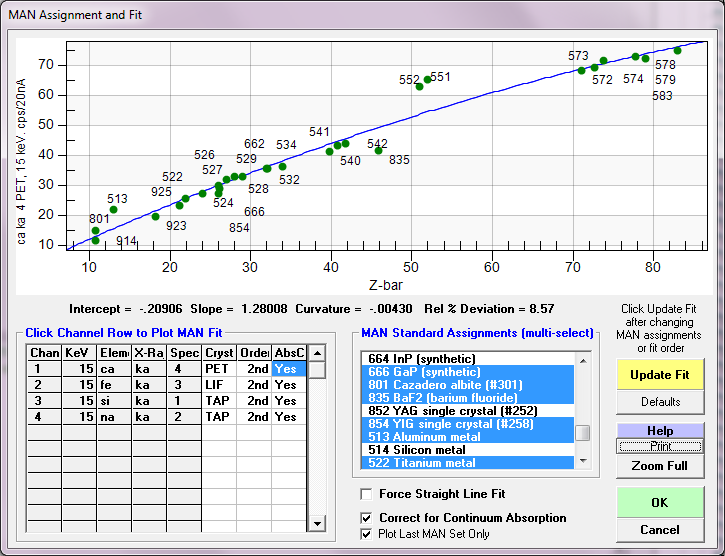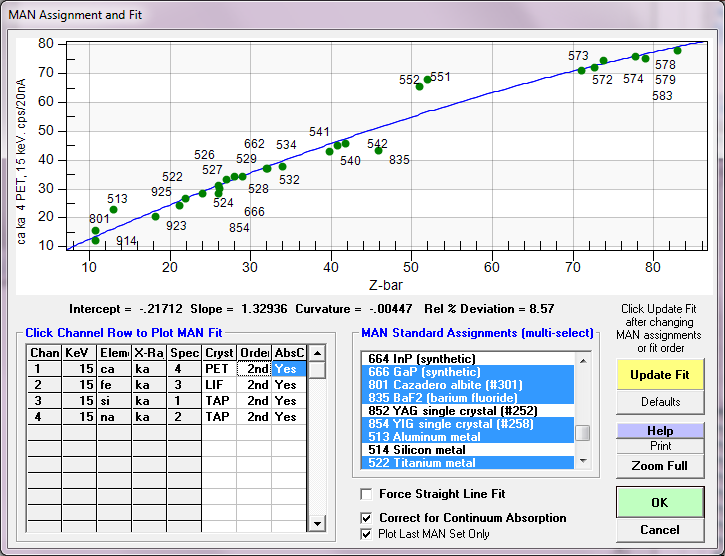Doh! Nevermind! I was wrong about being wrong...
It doesn't matter whether one uses the absorption correction term or the f(chi) term for the MAN regression and MAN correction, the results are exactly the same! Why? Because the absorption correction is the f(chi) term just re-normalized to the pure element *for that emission line*. The absorption correction for *that emission line* for other pure elements is of course, *not* 1.0!
So because in the MAN regression, the intensities are corrected for continuum absorption using this expression:
Icor = Iraw * ACORs
where Icor is the absorption corrected intensity, Iraw is the measured intensity and ACORs is the absorption correction for the emission line is each standard material (pure of compound).
And the unknown background intensities are de-corrected for the unknown absorption correction in the actual MAN bgd correction for the unknown, using this expression:
Iraw = Icor / ACORu
where Iraw is the calculated "raw" background for the unknown composition (to be subtracted from the raw P + B measurement to obtain the net intensity), Icor is the interpolated background from the previous MAN regression curve and ACORu is the absorption correction for the emission line in the unknown composition, there is, *in the end*,
no difference in the calculation!That is, because we multiply, and then divide, it doesn't really matter what absorption correction term we use, as long as we use the same term for both operations. To demonstrate this I found a probe run from 2004 where I had measured MAN calibration curves for 42 standards including compounds and pure elements. Here is the MAN plot for Ca Ka using the absorption correction term for the MAN regression (and MAN correction):

Now here is the same plot but using the f(chi) term:

Yes, the absolute values are slightly different because the absorption correction term is normalized to pure Ca, and the f(chi) is not, but the results are *exactly* the same after both multiplying and dividing the MAN intensities.
Sorry about that- false alarm... we can all "go home now"

john
PS What caused some confusion in the paper was that I denoted the continuum absorption correction as ZAFs and ZAFu, when I should have named it ACORs and ACORu.